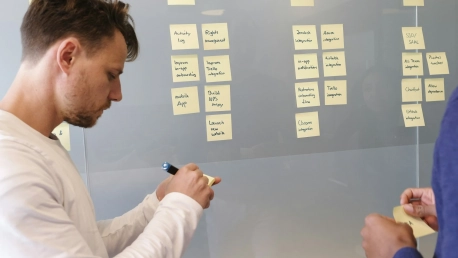In today’s dynamic product development arena, companies must engage in comprehensive planning and meticulous execution to deliver successful products. The process goes beyond merely conceptualizing a product; it involves a synergy of various departments working in unison. Cross-functional collaboration is crucial—teams from design, engineering, marketing, and more must work together seamlessly.The focus is on creating a product that not only meets but also exceeds customer expectations. A customer-centric approach is key, as it ensures the product is tailored to the needs and desires of its intended users. Developers must keep their pulse on market trends and user feedback, adjusting their strategies accordingly to incorporate innovative features and solutions.Additionally, recognizing and adapting to rapid technological advancements and consumer behavior shifts can give companies a competitive edge. This agile methodology enables businesses to stay ahead in the game, continually refining their product to align with the evolving landscape. Ultimately, a successful product is one that not only performs well but also resonates with consumers on a deeper level, leading to a strong market presence and sustained profitability for the company.
Understanding the Product Development Process
Interdisciplinary Collaboration
The product development process is inherently interdisciplinary, involving a dynamic interplay between roles and disciplines. Product managers, the strategists at the helm, rely on marketers for market insight and customer trends, designers for creating user-centric aesthetics and functionality, and engineers to turn concepts into workable solutions. It’s a dance of expertise where each step is crucial, and missteps can lead to lost opportunities or costly redesigns. Only through this orchestrated collaboration can a cohesive product that meets strategic business objectives be created.
Customer-Centric Product Lifecycle
Acknowledging the customer’s voice in product development is critical. From the inception of an idea through to the product’s maturity, customer feedback is the compass that guides improvement. During the conceptualization stages, understanding customer requirements and desires can lead to a product that truly resonates with the target audience. Post-launch, continued engagement with customers provides insights that are instrumental in refining the product. This ongoing dialogue can uncover opportunities for enhancements, extensions, or entirely new features.
Stages in Product Development
From Ideation to Concept Testing
The ideation phase is where creativity blooms. Teams are tasked with thinking beyond current market offerings to propose novel solutions to customer needs or untapped opportunities. These brainstorming sessions spill out numerous ideas—some feasible, others merely a seed for future concepts. Idea screening then serves as the first checkpoint. It filters through the rough diamonds to spotlight those with real potential for success. The criteria? Market need, alignment with company capabilities, customer appeal, and profitability.
Strategy to Commercialization
After a concept has been validated through testing, the product development process enters a strategy-centric phase. Herein lies the development of a detailed marketing strategy, encompassing branding, campaign planning, and the establishment of sales and market share goals. Pricing and distribution are also fleshed out, creating a framework under which the product will reach its intended market. This stage is about anticipation, preparing the terrain for the product’s entry into a competitive landscape.
Employing Agile Methodologies
Fast-Tracked Development with MVPs
Startups have championed the approach of launching minimum viable products (MVPs) to expedite market entry and engage consumers early in the development cycle. MVPs embody just enough features to attract early adopters and garner feedback that shapes the product’s evolution. This iterative process allows for real-time market testing and rapid adaptation to user preferences, often resulting in products that align tightly with customer needs.
Structured Workflow Frameworks
In seeking efficiency and adaptability, many organizations turn to structured workflow frameworks like Agile, DevOps, RAD (Rapid Application Development), SAFe (Scaled Agile Framework), and Waterfall. These methodologies offer a scaffold for teams to collaborate effectively and handle the complexities of product development.
Sustainability and Software Solutions
Challenges of Sustainable Product Development
Sustainability is now an essential consideration in product development. It’s no longer just about economic success but also about minimizing environmental impact and ensuring social responsibility. However, these goals pose significant challenges, including higher initial costs, additional research and development, and potential supply chain restructuring.
Software for Lifecycle Management
To streamline the adoption of sustainability as well as other complexities in product development, companies are increasingly relying on integrated software solutions.
Key Performance Indicators for Success
Short-Term Performance Metrics
When it comes to measuring the immediate impact of a product development effort, companies often look at key performance indicators (KPIs) like sales volume, revenue, unit cost, and time-to-market.
Evaluating Long-Term Success
While short-term KPIs are crucial, the sustainability of a product involves a longer view—one that factors in customer satisfaction, team morale, and the health of supplier relationships.
IBM’s Contributions to Product Development
Enhancing Development Capabilities with IBM Tools
IBM has long been synonymous with technological innovation, and its suite of product development tools carries this legacy forward.
Streamlining Processes
Navigating the product development landscape can be daunting, with myriad interconnected tasks and decisions that need to be orchestrated with precision.









